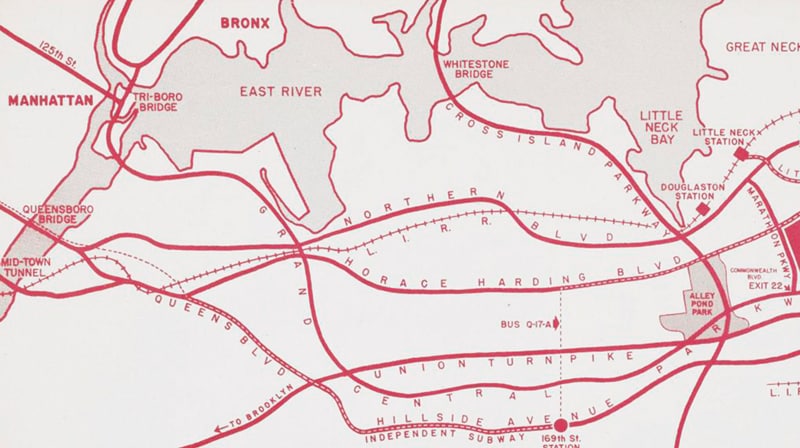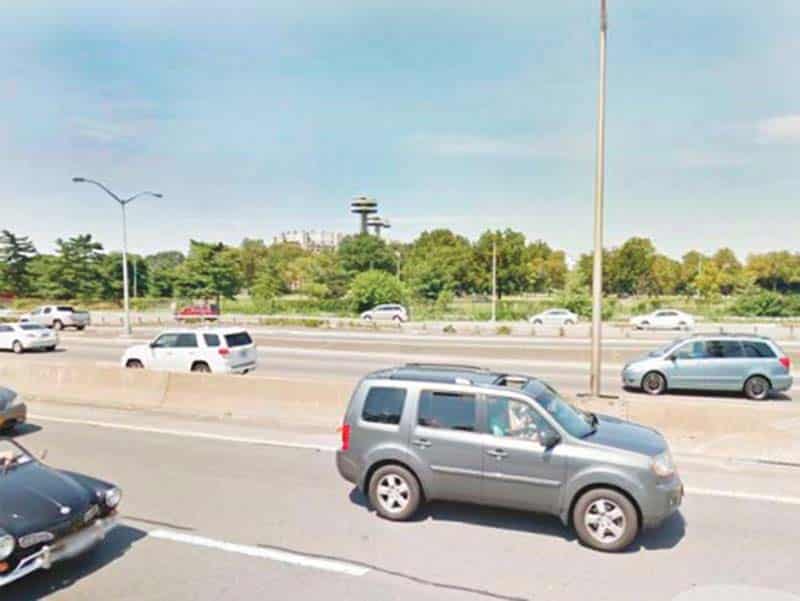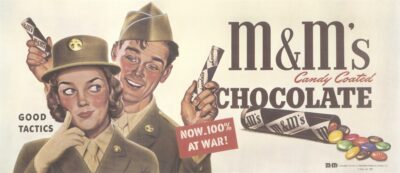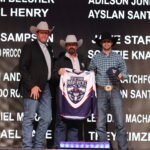 In northeastern Queens, the Horace Harding Expressway intersects with Francis Lewis Boulevard. The expressway is really just a long service road, a chance for motorists to skip the traffic on the Long Island Expressway (LIE) and try their luck instead of a side street, red lights or no red lights. Plenty of people find it a convenient way to navigate Long Island traffic. As we pointed out in a recent issue, Francis Lewis is not forgotten, nor is he remembered as he should be. The man suffered greatly for the cause of American independence, losing his wife and property in Whitestone. His son had even greater glory, serving in both the Revolutionary War and the War of 1812, while also serving a term as governor of New York. For all this, Morgan Lewis gets a street named for him in Brooklyn. And not “Morgan Lewis Street,” but just plain old “Lewis Street.” It’s not Jerry Lewis that the designers had in mind.
In northeastern Queens, the Horace Harding Expressway intersects with Francis Lewis Boulevard. The expressway is really just a long service road, a chance for motorists to skip the traffic on the Long Island Expressway (LIE) and try their luck instead of a side street, red lights or no red lights. Plenty of people find it a convenient way to navigate Long Island traffic. As we pointed out in a recent issue, Francis Lewis is not forgotten, nor is he remembered as he should be. The man suffered greatly for the cause of American independence, losing his wife and property in Whitestone. His son had even greater glory, serving in both the Revolutionary War and the War of 1812, while also serving a term as governor of New York. For all this, Morgan Lewis gets a street named for him in Brooklyn. And not “Morgan Lewis Street,” but just plain old “Lewis Street.” It’s not Jerry Lewis that the designers had in mind.
You might guess that Horace Harding, like per and fils Lewis, was also part of the founding era. He wasn’t. The man did however have a rendezvous with American history. Harding was born in 1863, one of those red-letter dates in the nation’s history. That year saw the legendary Battle of Gettysburg, where General George Meade’s forces beat back the advances of Robert E. Lee’s Army of Northern Virginia. Just a short few days later, many of those Union Army who fought in—at that time—history’s most ferocious battle had to travel back to New York City to fight another civil war, this one between a New York militia loyal to Governor Horatio Seymour and Union troops loyal to President Abraham Lincoln.
It wasn’t as bloody as Gettysburg, but as moviegoers learned by watching The Gangs Of New York, the caskets were lined up as far as the eye could see. The baby Harding slept through all this, but Horace Harding’s life would be shaped by the Civil War. After the war, America continued to grow mightily as an industrial power. By the turn of the century, it would surpass Great Britain as the world’s largest economy. With the Spanish-American War, it would acquire a global empire of its own. As important was the rise of train travel and the construction of railroads. That is where the action was. And Harding became part of the great boom of the Gilded Age.

Harding, who died in 1929, made his original fortune on Wall Street as a financier. In time, he rose to the director of the New York, New Haven and Hartford Railroad and the New York Municipal Railways System. It wasn’t until after World War II that Robert Moses made his mark on New York, building highways, tunnels and bridges throughout the metropolitan area. Moses had plans for New York well before the boom era of the 1950s. And he had an ally in Horace Harding. The latter, according to local historians, used his influence to promote highway development in Long Island, including Moses’ so-called Great Parkway Plan, one that would indeed reconfigure much of the New York City area.
Harding lent financial support to Nassau Boulevard, the thoroughfare constructed in the early 1920s, one that extended itself from Queens Boulevard in East Elmhurst to Little Neck. After Harding’s death, the boulevard was renamed in honor of the railroad magnate. Some historians have a dour view of the long-forgotten Harding. While most residents in the area don’t have the foggiest idea who the expressway is named for, Kathleen McGrath, a local history buff, had some ready answers.
“Horace J. Harding was an affluent financier and director of the New York Municipal Railways System,” she told the media in a 2011 interview. “But he was also an ardent supporter of Robert Moses’ ‘great parkway’ plan, who used his influence to petition for a highway from Queens Boulevard out to Shelter Rock in Nassau County,” adding that he was also “a big golfer and wanted to build a road that would provide better access to the Oakland Country Club where he was a member.”
“I think the real legacy left behind by Horace Harding is that despite all the money he and his friends had, they used their influence to cajole public funds from the city to build what was in essence a driveway to their country club out east,” McGrath concluded in her interview.
The expressway was far more than a roadway to a country club. It figured heavily in the entire construction of the LIE. From 1953-58, Moses built the expressway along the route of then-Horace Harding Boulevard. “Amazingly, the name has been retained till the present,” another historian has noted.
But is this so surprising? An expressway is not the only thing that bears Harding’s name. From 1930-45, a Horace Harding Hospital in Elmhurst served the community. A history of the hospital, now closed, is sketchy. As noted, historians list the closing date in 1945. However, a March 30, 1947, article in The New York Times hails the Horace Harding Hospital as the “first built here” since the end of the war. When did the hospital cease being named for Harding? 1962. The hospital, until 2009, operated under the name St. John’s Hospital. That’s not all. Rego Park boasts of a Horace Harding Elementary School (P.S. 206) and a Horace Harding Park for toddlers.
A hospital, a school and a playground. All of this happened after the man’s death, so Harding could not have used his money or influence to have things named in a vainglorious tribute to him. His financial backing of Nassau Boulevard was the driving force of that name change.
Harding was more than a high-powered railroad executive. He was a man who gave to the community in a manner its residents appreciated. Who knows? Maybe Harding has survivors who can further enlighten the public on the man whose expressway is driven on day in and day out by thousands who lack the time to think of such things.




















One Response
The Horace Harding Hospital was built in 1945 by my uncles and sold to Saint Johns in 1962